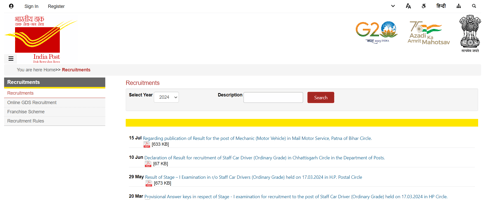Are you a student looking for ways to earn money while still in school? Freelancing can be the...
How To Find Jobs Near Me: Step by Step Guide
Finding a job close to home can save you commuting time, reduce stress, and improve your work-life balance. In this guide, I’ll walk you through practical steps to locate jobs near you, from utilizing job search platforms to networking with local employers. This guide is designed to help you efficiently search and apply for positions within your vicinity.
Step 1: Define Your Job Preferences
Before you begin your job search, it's essential to know what type of job you're looking for. Define your job preferences based on:
- Industry: Which industry are you interested in? Technology, healthcare, education, retail, or finance?
- Job Type: Do you prefer full-time, part-time, freelance, or temporary roles?
- Skills: What are your strengths, qualifications, and skills? Do you want to use these in your next job?
- Salary Expectations: What’s the salary range you're aiming for, and how flexible are you with it?
- Distance: How far are you willing to commute? Consider the time, transportation options, and costs involved.
Being clear about your job preferences will streamline your search and help you filter through the numerous job listings available.
Step 2: Use Job Search Websites and Apps
One of the quickest ways to find jobs near you is by using job search websites and apps. These platforms have filters that allow you to search by location, making it easier to find opportunities close to home.
- Indeed: This platform allows you to search for jobs by city or postal code. You can filter your search by distance, job type, salary, and more.
- LinkedIn: LinkedIn not only provides job listings but also allows you to network with professionals in your industry. Use the location filter to find jobs near you.
- Google for Jobs: Type in “jobs near me” on Google, and the search engine will show you job openings based on your current location. You can filter the results by job title, company, and location.
- ZipRecruiter: With a user-friendly interface, ZipRecruiter allows you to filter job postings based on proximity to your location.
- Monster: Another popular platform, Monster offers a location filter to help you find jobs near you. You can also upload your resume for potential employers to find you.
- Glassdoor: Along with job postings, Glassdoor provides company reviews, salary insights, and interview tips.
Make sure to create an account on these platforms and upload an updated resume to make the most of their features.
Step 3: Leverage Google Maps for Local Opportunities
You might be surprised to learn that Google Maps can also be a handy tool in your job search. Many local businesses, restaurants, and stores post job openings on their Google business profiles. Here’s how to use Google Maps:
- Open Google Maps on your computer or phone.
- Search for businesses in your area using terms like “companies near me” or “retail stores near me.”
- Click on the individual businesses that interest you.
- Look for job postings, contact information, or career links on their profiles.
If you find an interesting company but don’t see a job posted, consider visiting their website or even contacting them directly to inquire about job opportunities.
Step 4: Set Up Job Alerts
Many job boards and platforms allow you to set up job alerts. These alerts notify you via email or app notifications whenever a job that matches your criteria becomes available.
- Indeed Alerts: Set up email alerts for jobs near your location.
- LinkedIn Notifications: Enable notifications for specific companies or job types in your area.
- Google for Jobs: Create alerts for “jobs near me” searches.
- Job Apps: Download apps like Indeed or LinkedIn to receive notifications on your phone in real-time.
By setting up job alerts, you’ll always be one of the first to apply when a suitable position opens up.
Step 5: Utilize Local Job Boards and Classifieds
In addition to national job boards, look for local job boards and classified ads to find opportunities that may not appear on larger platforms. Check the following:
- Local Newspapers: Many community newspapers have online classified sections where employers post job openings.
- Community Centers and Libraries: Sometimes, physical job boards in local community centers or libraries are updated with available positions. Check them regularly.
- Facebook Groups: Search for Facebook groups dedicated to jobs in your city or region. Many businesses post openings there.
- Craigslist: Craigslist has a job section for local listings. Be sure to check the "Jobs" category under your city or region.
Many small businesses and local employers use these platforms to advertise jobs, so it’s worth browsing through them.
Step 6: Network with Local Professionals
Networking can significantly boost your chances of finding a job near you. Attend local networking events, such as career fairs, industry meetups, and business workshops to meet people who may know about job openings in your area.
- LinkedIn Local Groups: Join local LinkedIn groups to connect with professionals in your city.
- Chamber of Commerce Events: Local chambers of commerce often organize business networking events where employers and job seekers can connect.
- Professional Associations: Many industries have professional associations that hold networking events and conferences.
- Informational Interviews: Reach out to people working at companies you're interested in and ask for informational interviews. This can lead to job referrals or openings.
Building relationships with local professionals can help you hear about jobs before they’re even posted publicly.
Step 7: Visit Local Companies and Apply In-Person
Some employers still prefer the traditional method of accepting applications in-person. Visiting businesses in your area can show initiative and allow you to make a lasting impression. Here’s how to do it:
- Prepare Your Resume: Bring several printed copies of your resume, and ensure it’s updated and professional.
- Dress Appropriately: Wear business-casual attire, even if you're applying for a part-time or casual job.
- Be Polite: Introduce yourself politely to the manager or HR representative and ask if they’re hiring.
- Follow Up: After applying in person, send a follow-up email or call to reiterate your interest in the job.
This method works especially well for retail, hospitality, and other service-oriented jobs where face-to-face interactions are important.
Step 8: Leverage Social Media for Job Search
Social media platforms can be powerful tools for finding jobs near you. Aside from LinkedIn, platforms like Facebook, Twitter, and Instagram can help you discover local opportunities. Here’s how:
- Facebook Job Listings: Facebook has a “Jobs” section where employers post job openings based on your location. You can also join groups dedicated to job postings in your area.
- Follow Local Companies on Twitter: Some businesses use Twitter to post about job openings, especially for part-time or freelance work.
- Instagram Stories: Many companies and small businesses use Instagram stories to share job openings, particularly for creative roles like marketing, design, or photography.
- Hashtags: Use location-based hashtags, such as #JobsNearMe, #Hiring [CityName], or #NowHiring to find job openings in your area.
Don’t forget to update your social media profiles to reflect your job search, particularly LinkedIn and Twitter, as potential employers might look at your profiles before hiring.
Step 9: Tap Into Staffing Agencies
Another resource to explore is staffing agencies. These agencies help match job seekers with employers looking to fill specific roles, often in your local area. They handle the recruitment process and can help you land both temporary and permanent positions.
- Research Local Agencies: Look for staffing agencies in your city that specialize in your industry.
- Submit Your Resume: Send your resume to these agencies and discuss what type of job you're looking for.
- Attend Interviews: Be prepared to attend interviews with the agency, as well as the employers they match you with.
- Stay in Touch: Regularly follow up with the agency to stay on their radar for new opportunities.
Staffing agencies are an excellent resource if you’re looking to land a job quickly or want to try temporary work to build experience.
Step 10: Be Proactive and Follow Up
Finding a job can take time, but being proactive can significantly improve your chances. Here are a few proactive strategies to enhance your job search:
- Tailor Your Resume: Customize your resume and cover letter for each job application to highlight relevant skills.
- Follow Up After Interviews: Send a thank-you note after an interview to express your interest in the position.
- Continue Networking: Even after you apply for jobs, keep networking with local professionals and attending career events.
- Keep Learning: Take free online courses or certifications in your field to strengthen your skills and make yourself more marketable.
Conclusion
Finding a job near you doesn’t have to be overwhelming. By defining your job preferences, utilizing online tools, networking with professionals, and proactively applying, you can increase your chances of landing a role that’s convenient and fulfilling. Remember to stay persistent, use all available resources, and follow up consistently to ensure you don't miss out on great local opportunities.
Whether you’re looking for full-time employment, part-time work, or freelance gigs, this step-by-step guide will help you navigate the process of finding jobs close to home.



